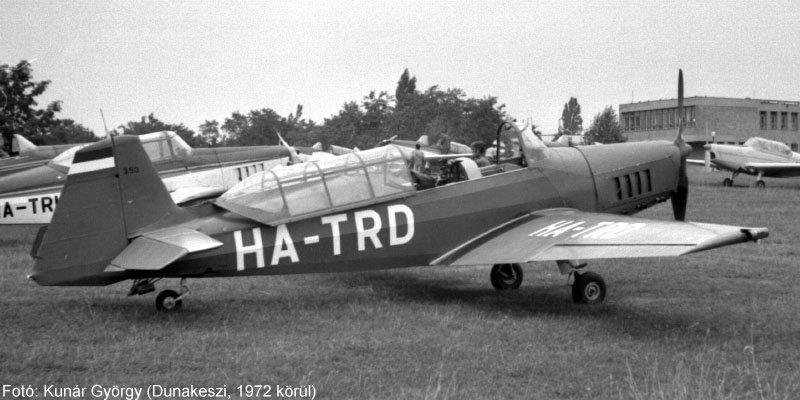The Trener kit actually, and surprisingly, has more parts and sprues than the Zero that is just about to be released. But, this is due to alternative and optional parts, to a large degree. There are an enormous number of parts that account for unique variations and alterations that the Trener has met within actual use. And we don't even include all of them. To account for all the changes would have greatly complicated the development of the kit and made the instructions a mess. Perhaps, someone will complain based on this fact, but I am sure that everything has a limit, and we reached a maximum point of coverage with this kit. Anyone who wants to take the kit further is more than welcome to do so by their own means.
Quote from Eduard´s info letter, November 2021
This quote above says a lot. As you have seen earlier, the Trener family had a lot of variants, different engine options, wings, propellers, canopies, instrument panels, landing gear configurations, special variants... Even Eduard admits that they are unable to cover everything. Keep this in your mind, and keep reading, I will tell you about my plans with this kit.
The HA-TRD
HA-TRD was born in 1959 as S/N 0350, and delivered to Hungary as part of a small batch of 5 brand new Zlin Z-226T trainers. It wore a sparkling silver/light blue livery. It was used for 15 years, when in 1974 the plane was grounded. According to some sources the central section of the wing had problems, and that (almost) ended its career.
The plane somehow ended up in a small village, Darnózseli (say after me, Dar-nó-zse-li. Nonono, try again, slower. Darn-oh-jelly. Much better, your Hungarian pronunciation is amazing!).
At this point, the story gets a bit blurry. "It was used as a jungle gym on the playground". "It was on the main square". "It was in the school yard" I asked a lot of people, everyone told me a different story. The common point was the village. I managed to find the contact details of the old school principal, who is enjoying his retirement years, and works as a local historian for fun. Hopefully he will be able to give me more information.
I am not sure why the plane ended up in that remote, tiny village, but a few years later it was moved into one of the hangars of the airfield near Győr. The plane was in very bad condition, but the old lead mechanic of our flying club was optimistic. "You guys will fly with this plane!". He was a respected member of the club, long time pilot, but nobody really believed him that the plane will ever fly.
Fast forward to 1996. HA-TRD was retrofitted with a new engine, got a new livery and returned to the club! It took some time to get the money, parts and energy to do it, but the plane was in airworthy condition again, after spending nearly 20 years on the ground. I just joined the club the year before, and was immediately amazed by the story.
Fast forward to 2021. I moved abroad long time ago, not flying anymore, the plane was sold to Slovakia, and operates there as OM-TRD. Eduard releases a fantastic, new tool, super detailed Zlin Trener family. My plan is to build the TRD with its original configuration (Z-226T, silver/blue livery) and after the restoration (Z-226MS, yellow/red livery).
Eduard provides parts for both variants in this double release, but here comes the twist. Do you remember what they wrote? They can´t cover all variants?
Well, take a look on the photos. The TRD is not a common 226MS. I posted a question about it to a local aviation research group, and a few old club members showed up. One of them pointed out something interesting - I did not notice it for decades. The canopy is not coming from a 226, it is a later, shorter variant, probably comes from a 526. The main difference are the length, and the missing frames. We can even see the additional parts needed to cover the gap between the fuselage and the shorter canopy. The other detail is that the engine cover is supposedly a 726 part, and that is not going to be released by Eduard. I think I will be able to use the kit parts to match the original plane, but I will need to go through a tons of photos and drawings to be sure.
-

The plane had at least three liveries during its lifetime. The original silver/blue above, this rather militant green/blue with large white registrations, and the final yellow/red version.
I will continue posting about the kit parts and more Trener stories later. I will also share my old photos of the TRD to show some interesting details.
Photos from the Avia-info.hu webpage.